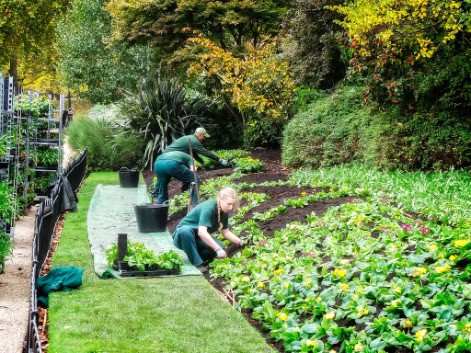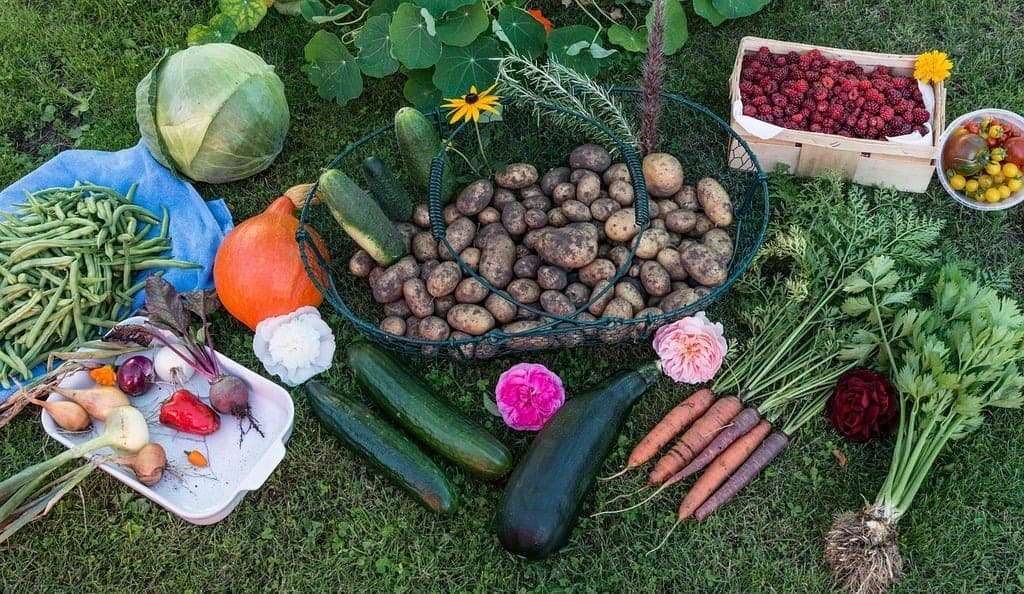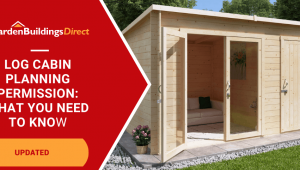Jump to:
As autumn rolls in, the leaves change, and the air gets cooler. For gardeners, this brings rewards and challenges. That’s what we’ll cover in this guide, helping you prepare for what’s ahead and make the most of your garden this season.
The Ups of Autumn Gardening

Planting in autumn can give you a head start for spring. Hardy plants, in particular, will have time to establish roots over winter, so they’re ready to grow as soon as the weather warms up. But that’s not the only reason autumn gardening is great—here are a few more:
Soil remains warm
While air temperatures drop in autumn, the soil stays warm, holding onto heat from the summer. Roots keep growing until the ground gets too cold, so planting in autumn gives them time to settle in before winter kicks in.
We recommend planting about six weeks before your area’s first big frost to give them enough time to take root. If you’re unsure when that is, this interactive first-frost date map (courtesy of Plant Maps) can help.
Air is cooler
The worst of the summer heat is over, and spending time in the garden during the day becomes more pleasant. This means you won’t have to rush to beat the heat or limit gardening to early mornings and evenings. You can also work for longer and tackle those jobs you might have put off during the hotter months.
However, not everything from summer can carry on into spring. For instance, tender plants like tomatoes and peppers won’t survive the cold, so if you have them in your beds, harvest them before the first frost. Or, move them into your greenhouse as soon as autumn starts to arrive. Also, avoid watering during colder nights, as moisture sitting on leaves overnight can encourage mould and disease.
Meanwhile, lawn care, such as aeration and reseeding, is best done in autumn while the soil is warm enough for grass to settle in.
Note: If you’re gardening in the evening, wear layers to stay warm and be mindful of slippery surfaces.
High chances of precipitation
This time of year brings increased rainfall in the UK, though it varies by region—some areas may see more rain than others. The soil soaks up the autumn rain, helping to keep moisture levels steady.
This makes life easier for newly planted plants, as they won’t dry out as quickly, and it means less watering for you. But if the rain isn’t quite enough, give them a top-up to keep them going until the ground gets too cold to absorb water.
Fewer weeds to deal with
As temperatures drop, many common garden weeds start to fade or go dormant. This means less competition for space, water, and nutrients, giving your newly planted plants a better chance to settle in and grow strong before spring arrives.
Less active insects
As the weather cools, you’ll notice fewer troublesome pests like aphids, vine weevils, and slugs causing havoc in your garden. This makes it a great time to check over your plants and tackle any lingering issues with treatment if needed.
That said, autumn doesn’t mean pests disappear completely. Some might still be hanging around, so keep an eye on them! And if you’ve got trees overhanging your home or garden room, trim them back to keep unwanted bugs from sneaking in.
Need more tips? Check out this guide: How to Keep Insects Out Your Summerhouse
The Downs of Autumn Gardening
While autumn is a great time to garden, it’s not without its challenges, such as:
Waterlogged soil
Rainfall can leave the soil soggy and compacted, making it harder to plant and work with. If your area gets a lot of rain, add compost to improve drainage and avoid walking on wet soil to prevent further compaction. Switching to raised beds can also help. If you have the chance, give them a go!
Shorter days = less sunlight
With fewer daylight hours, plants get less sunlight, which can slow growth. Some may struggle to put on enough growth before winter, making them more vulnerable to the cold. For gardeners, the shorter days mean less time to tackle jobs in natural light.
Choose hardy, shade-tolerant plants that can handle lower light levels, as they’ll grow better with limited sun. For vegetables, go for quick-growing autumn crops like spinach and winter lettuce. Plant them in the sunniest spots available.
You’ll find more tips in this guide: How To Prepare Your Plants To Survive Winter
More Autumn Gardening Ideas for You

- Invest in a greenhouse: It’s a year-round gardening companion. With one, you can grow crops for longer, start winter-hardy plants early, and protect delicate ones that wouldn’t survive outside. Read this guide to learn more: How a Greenhouse Can Help Your Garden this Autumn
- Refresh your garden storage: Tidy your shed or potting shed each season to keep it organised and ready for what’s next. In autumn, put away summer gear, get winter essentials to hand, and make sure everything stays dry to prevent mould, rust, and wood rot.
- Head to your log cabin after gardening: After a day of autumn gardening, a log cabin is the perfect place to unwind. Stay warm, enjoy a hot drink, and relax while admiring your hard work.
This guide has more for you: How To Make The Most Of Your Garden In Autumn





